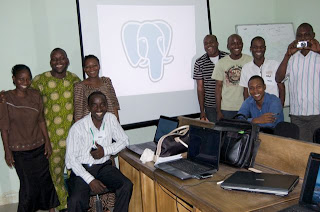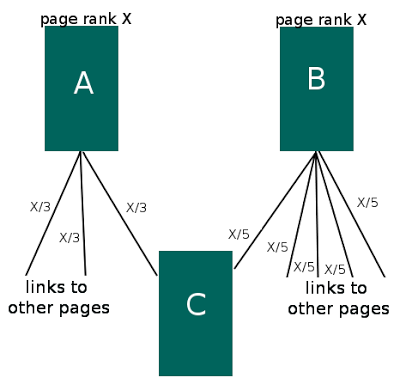MTU tweak: a fix for upload pain
While traveling and staying at Hostel Tyn in Prague’s city center, I ran into a strange problem with my laptop on their wireless network.
When many people were using the network (either on the hostel’s public computers or on the wireless network), sometimes things bogged down a bit. That wasn’t a big deal and required merely a little patience.
But after a while I noticed that absolutely no “uploads” worked. Not via ssh, not via browser POST, nothing. They always hung. Even when only a file upload of 10 KB or so was involved. So I started to wonder what was going on.
As I considered trying some kind of rate limiting via iptables, I remembered somewhere hearing that occasionally you can run into mismatched MTU settings between the Ethernet LAN you’re on and your operating system’s network settings.
I checked my setup and saw something like this:
ifconfig wlan0
wlan0 Link encap:Ethernet HWaddr xx:xx:xx:xx:xx:xx
inet addr:10.x.x.x Bcast:10.x.x.x Mask:255.255.255.0
inet6 addr: fe80::xxx:xxxx:xxxx:xxxx/64 Scope:Link
UP BROADCAST RUNNING MULTICAST MTU:1500 Metric:1
RX packets:1239 errors:0 dropped:0 overruns:0 frame:0
TX …browsers environment networking
Last day in Nigeria! A short summary
Today is my last day in Nigeria. I hop in a car in a couple hours and head off to visit the university in Akure, and then I will be driving to Lagos to catch a plane home.
My students are pictured above. We covered a great deal of material this week. They learned about the PostgreSQL project, basic database administration, how to develop a schema from forms and application requirements, how to write procedural code inside the database, and how to use the pgAdmin and psql interfaces.
I learned about how many of the officials and IT workers I met (both in the class and outside of it), had worked very hard on the court case that led to the change in government in Ondo State three months ago. There had been systematic election fraud, and they were able to prove it in court using some clever IT and forensic analysis work. The members of SITEDEC believe very strongly in the importance of IT in increasing government accountability and transparency, a belief re-affirmed by their recent successes.
I’m looking forward to hearing about how the work progresses on their census and voter registration databases. Of course, I want to come back to Nigeria. It’s a beautiful country, and I didn’t …
postgres
PostgreSQL Windows installer tip: passwords
Updated below!
When specifying a password for the Windows PostgreSQL one-click installer, you get this message:
Please provide a password for the database superuser and service account (postgres). If the service account already exists in Windows, you must enter the current password for the account. If the account does not exist, it will be created when you click ‘Next’.
If you have already installed Postgres as a service, you will need to enter the current user postgres service user password to get past the password dialog box. Meaning, if you’re logged in to Windows as ‘selena’, you need to enter selena’s password. As a non-Windows user, this baffled me, and a few other people on this thread.
Otherwise, you can just enter a password that will be used for the ‘postgres’ database user. Hope this helps someone!
Update:
Further explanation from Dave Page, the maintainer of the Windows package:
Selena: It’s not the password for the user that you are logged in as that you need to enter, it’s the password for the service account (ie. postgres).
Unlike *nix & Mac, service accounts on Windows need to have passwords so unfortunately we need to ensure we have the correct password to …
postgres windows
In Nigeria: Weekend exploring
Yesterday, I traveled to a Michelin (yes, the tire company!) plantation for a party thrown in honor of the new Secretary to the Ondo State Government, Dr. Aderotimi Adelola.
Michelin grows rubber trees on this sprawling estate. It took nearly 20 minutes to get from the highway to the primary school deep inside the plantation where the celebration was held. Tapped rubber trees pictured below!
I was invited to a table inside the Governor’s main tent, and spent most of the time just looking around at all the government officials, and chatting with the Chairman of SITEDEC, Cyril Egunlayi.
The high point of the afternoon was Dr. Olusegun Mimiko’s speech welcoming Dr. Adelola to the government. He’s a charismatic speaker. The people around the perimeter pressed closer, and were attentively silent for his 10 or 15 minute speech. He emphasized education—his hometown’s slogan is “Home of Education”. He also said that despite Ondo State’s history of leading Nigeria in educational opportunities, the state had regressed and needed to catch up again. Mimiko speaking:
The car ride out and back to the plantation took about two hours each way. I spent much of that time talking about open …
postgres
Nigeria PostgreSQL Training: Day 1
I am in Lagos, Nigeria this morning, preparing for a half-day car ride to Akure in Ondo State. I’ll be spending the next seven days with programmers from Ondo state, who are six months or so away from deploying a system to provide government-provided services using a centralized card system. They are designing their database using PostgreSQL!
Ondo state has a little over 3 million people, and plans to integrate a half-dozen government services under the centralized data system. They conducted a census in 2006, and will be using their new system to gather data yearly going forward.
Their plan is extremely ambitious, given obstacles like lack of power in most of the rural areas, and social issues like people not wanting to give accurate information about themselves to the government. Some biometric information, like finger prints, will be gathered electronically using special machines that they will primarily lease (instead of buying—significant cost savings), and these machines require power. They have been specially outfitted with dry-cell batteries, that operate for about 8 hours before needing to be recharged.
For the social problems around data collection, a marketing campaign …
postgres
LinuxTag 2009 day 1
Today was the first day of LinuxTag 2009. Representing the Interchange project are Stefan Hornburg of LinuXia Systems in Germany, Davor Ocelić of Spinlock Solutions in Croatia, and I, Jon Jensen, of End Point in the U.S.
Tuesday afternoon we set up the booth (here still underway):
That was a fairly quiet affair since many exhibitors showed up later that afternoon or early Wednesday morning. But it was nice to get it all done early. The setup involves the network and power wiring behind the scenes, hanging the signs, unloading the marketing materials, and getting all the equipment tested (and then put away again for the night). At night back in our apartment we made some updates to the slide presentation to include many more examples of some of the busy and interesting sites we have current data on that appear in the Interchange Hall of Fame.
We’re sharing a booth with the YaCy distributed search project, and have had a few good discussions with their people.
Booth traffic was probably about the same this year as it was the first day last year—a little slow. We talked with several people who were interested in hosted e-commerce solutions such as Interchange is.
In two cases, very …
conference interchange open-source
nofollow in PageRank Sculpting
Last week the SEO world reacted to Matt Cutts’ article about the use of nofollow in PageRank sculpting.
Google uses the PageRank algorithm to calculate popularity of pages in the web. Popularity is only one factor in determining which pages are returned in search results (relevance to search terms is the other major factor). Other major search engines use similar popularity algorithms. Without describing the algorithm in detail, the important takeaways are:
- PageRank of a single page is influenced by all inbound (external links) links
- PageRank of a single page is passed on to all outgoing links after being normalized and divided by the total number of outgoing links
So, given page C with an inbound links from page A and B, where page A and B have equal page rank X, page A has 3 total external links and B has 5 total external links, page C receives more PageRank from page A than page B.
From an external link perspective, it’s great to get as many links as possible from a variety of sources that rank high and have a low number of external links. From an internal site perspective, it’s important to examine how PageRank is passed throughout a site to apply the best site architecture. …
seo
Open Source Bridge: the aftermath
Open Source Bridge Opening Day
I’ve been planning the Open Source Bridge conference in my spare time over the past 9 months here in Portland, OR. We finally made it happen June 17-19, 2009 at the Oregon Convention Center. I had the pleasure of co-chairing the event with Audrey Eschright, and was extremely happy that End Point decided to also sponsor the event.
The conference was organized around the idea of “open source citizenship”, and what things we as individual contributors, companies and users of free and open source software do to participate. We came together to share how we do things, what we’ve already done, and what we might be doing in the future.
The conference held 76 sessions, from over 100 speakers and panelists and 475 total participants over three days. There were 8 rooms full of talks for about 9 hours every day. We had a 24-hour hacker lounge at the conference hotel, and it was packed every evening—including our closing night, when we wrapped right at midnight.
Above, are my slides for the opening remarks, and there’s even a video of the opening session, the keynotes and all the sessions that happened in the Fremont room will be available at osbridge.blip.tv. …
conference open-source










